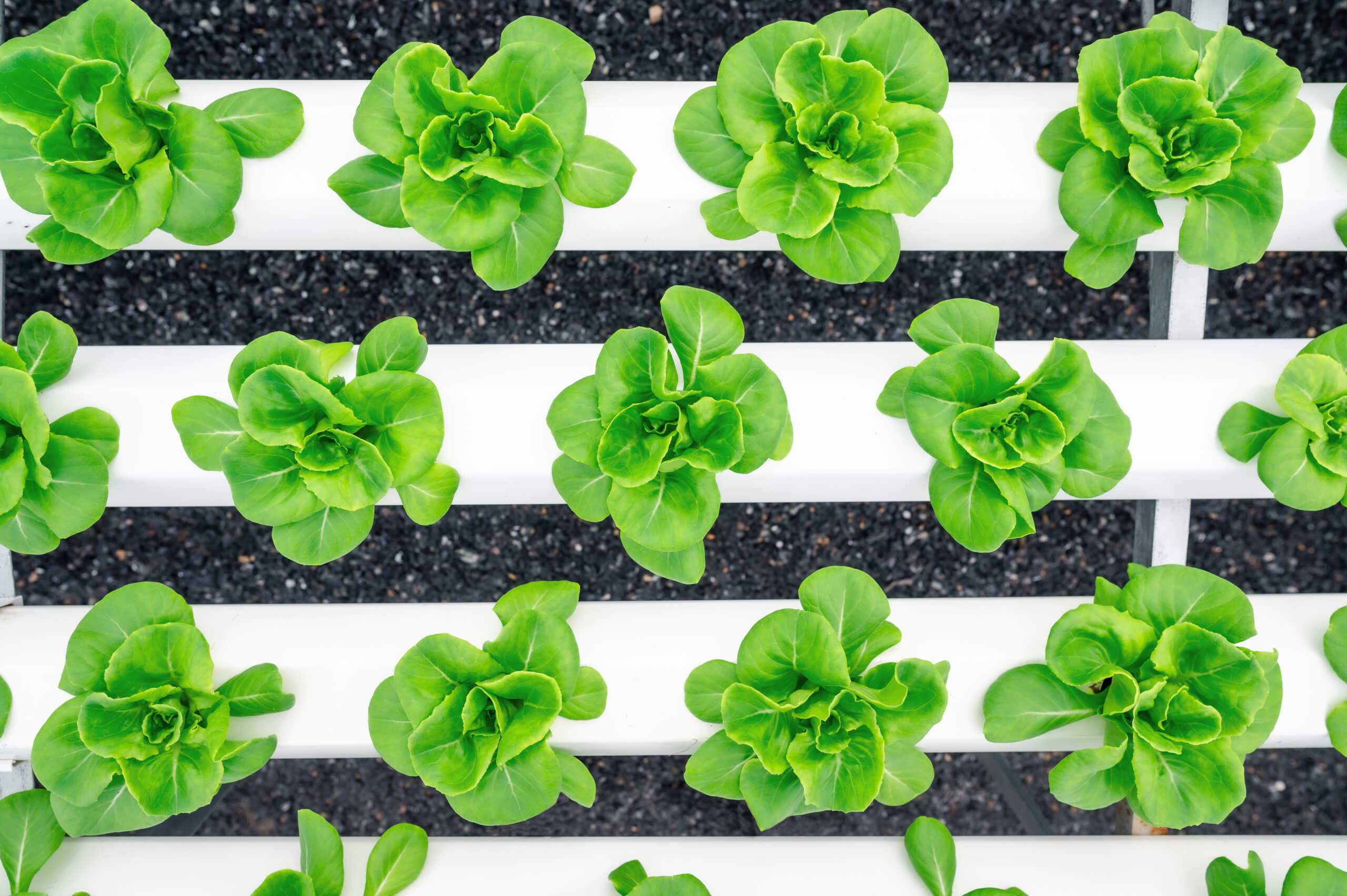Access to fresh, nutritious produce is one of several interventions to prevent and manage chronic disease in Food As Medicine initiatives. Unfortunately for roughly 3.4 million Virginians1, food access and food security remain a significant challenge to achieving better health. Traditional food pantry models, while beneficial, often struggle with consistent access to perishable fresh foods. Innovative solutions, such as vertical farming, can revolutionize the approach to food insecurity, offering a sustainable path towards better nutrition and increased access to fresh produce. Hydroponics is one form of vertical farming that uses mineral nutrient solutions dissolved in water as a method to grow plants without soil.
There are several benefits to vertical farming systems when considering the needs and challenges within community health spaces.
Increased Access to Fresh Produce: Hydroponic structures come in an array of sizes and can be placed almost anywhere – indoors, in urban environments, and within existing food pantry facilities. This reduces several access barriers related to food deserts, food swamps, transportation, and more. Hydroponics also support locally grown produce to be readily available to communities in need. Our vision is for every food pantry and food farmacy to offer vibrant, leafy greens and fresh vegetables harvested right in front of community members.
Improved Food Pantries with Better Nutrition: By complimenting food pantries and food farmacies, we can offer a greater variety of foods and a more consistent supply of fresh and healthful choices. Growing produce on site also reduces the reliance on external supply and donations. In offering more fresh fruits and vegetables, vertical farming directly fights against malnutrition and chronic disease, often seen from nutrient imbalances related to food insecurity. Produce harvested at its peak ripeness holds more vitamins and minerals, stays fresher longer, and offers improved nutritional value2.
Sustainable and Efficient: Hydroponic systems use up to 90% less water than traditional farming and allows for year-round supply and harvest2. Most hydroponic systems maximize vertical space making them more efficient and they yield more crops per square foot than soil farming2. They are an environmentally friendly food production source based on the reduced risks and harm associated with soil-related diseases, pests, and pesticide usage.
Education and Research Opportunities: Hydroponic projects can serve as powerful education and research tools. We can mobilize vertical farming to engage the community, support sustainable agriculture, promote healthy eating, and advance research related to food security interventions.
Important Considerations
While hydroponics presents many promising benefits, it’s important to recognize some practical considerations—particularly when scaling these systems. Hydroponic setups, especially at a commercial or institutional level, can require a significant upfront investment in equipment, lighting, and environmental controls. Ongoing system maintenance, staff training, and troubleshooting also require attention and technical skills. Because hydroponics depends on electricity, consistent waterflow, and precise nutrient management, disruptions like power outages or equipment failure can quickly impact productivity.
To address these factors, we are exploring diverse funding opportunities in support of hydroponic initiatives to alleviate cost barriers. We also recognize the value in factoring in backup power sources, including solar-powered options. Additionally, we have expanded our community partnerships to include professionals in the climate smart arena.
Takeaways
While the anticipated challenges do not outweigh the benefits, they do highlight the need for thoughtful planning, staffing, and support when integrating hydroponic systems into community health settings. By embracing hydroponic farming, we can cultivate healthier communities, a more robust food pantry system, and tackle food insecurity closer to the source. It’s an investment in a future where fresh, nutritious food is accessible to everyone.
Resources:
1. Rabbitt, M. P., Reed-Jones, M., Hales, L. J., & Burke, M. P. (2024). Household food security in the United States in 2023 (Report No. ERR-337). U.S. Department of Agriculture, Economic Research Service. https://doi.org/10.32747/2024.8583175.ers
2. Rajaseger, G., Chan, K. L., Yee Tan, K., Ramasamy, S., Khin, M. C., Amaladoss, A., & Kadamb Haribhai, P. (2023). Hydroponics: current trends in sustainable crop production. Bioinformation, 19(9), 925–938. https://doi.org/10.6026/97320630019925

